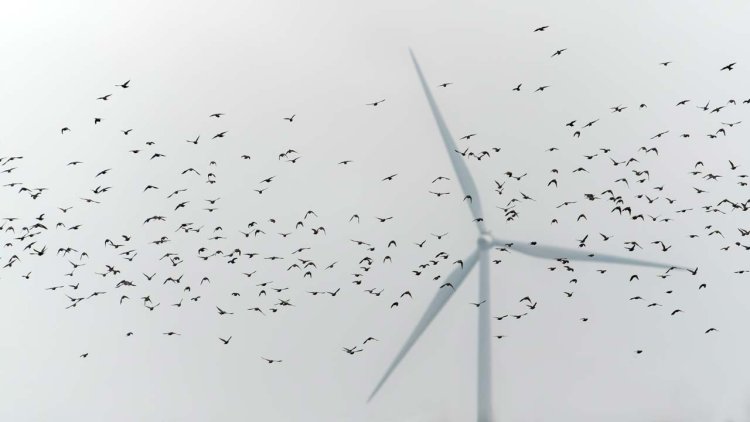The findings highlight the need to minimize the impact of offshore wind farms on seabirds, while balancing this effort with the demand for renewable energy.
Previous research has found that different seabird species respond to offshore windfarms differently—they may avoid the area which can lead to habitat displacement or they may be attracted to the area which can increase mortality via collisions with the turbines. However, it is difficult to estimate the long-term population impacts of offshore windfarms on seabird populations.
Stefan Garthe and colleagues investigated how red-throated loon abundance changed before and after the construction of five offshore windfarm clusters in the southeastern North Sea dubbed BARD/Austerngrund, Dan Tysk, Butendiek, Helgoland, and North of Borkum. The authors used data on loon numbers from ships, aircraft, and digital aerial surveys collected during March and April between 2010 and 2017. They modeled how the density of loon populations changed within the area up to and beyond ten kilometers away from the windfarm.

Offshore wind farms in the North Sea have reduced the population of loons—fish-eating aquatic birds also known as divers—by 94% within a one-kilometer zone, according to new research published in Scientific Reports. The findings highlight the need to minimize the impact of offshore wind farms on seabirds, while balancing this effort with the demand for renewable energy.
Previous research has found that different seabird species respond to offshore windfarms differently—they may avoid the area which can lead to habitat displacement or they may be attracted to the area which can increase mortality via collisions with the turbines. However, it is difficult to estimate the long-term population impacts of offshore windfarms on seabird populations.
Stefan Garthe and colleagues investigated how red-throated loon abundance changed before and after the construction of five offshore windfarm clusters in the southeastern North Sea dubbed BARD/Austerngrund, Dan Tysk, Butendiek, Helgoland, and North of Borkum. The authors used data on loon numbers from ships, aircraft, and digital aerial surveys collected during March and April between 2010 and 2017. They modeled how the density of loon populations changed within the area up to and beyond ten kilometers away from the windfarm.



